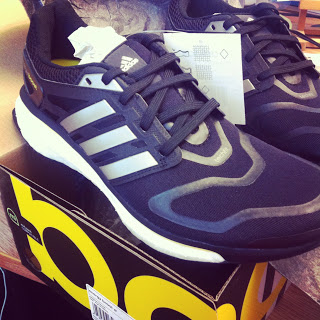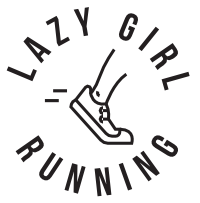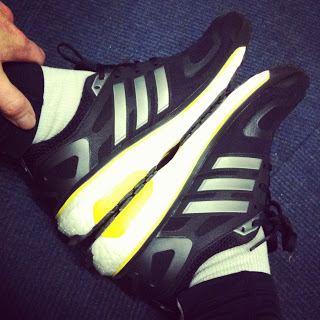adidas hadn’t exactly been shy about how good they think this product is. For weeks they’d told us to expect a shoe that would ‘revolutionise running’. That’s some big talk right there. Then at the product launch they wheeled out two very big guns who know a thing or two about running. Yohan Blake and Haile Gebrselassie came out in support of the shoe.
Gebrselassie, whose own marathon world record was set in an adidas shoe, was quick to point out that, yes, adidas sponsor him and therefore you’d expect him to say it’s good but that he would be honest in his opinion. And that very highly regarded opinion was that when he first tried the shoes he thought: ‘Wo, what world record could be done in these?’
Perhaps when some of the top marathon runners in the world line up at the start of the London Marathon in April, we’ll find that out. Kenya’s Wilson Kipsang will apparently be wearing an as yet unseen adiZero Boost to take on the quick course that has yielded so many marathon world records in the past.
But what about your average middle of the pack runner? We’re unlikely to be breaking any world records any time soon, but a little help towards a new PB would be nice. adidas sent me a pair to try out, probably having heard I was pretty much as middle of the pack as it’s possible to get.
A lot of the talk about the revolutionary nature of the shoe has focused on the sole – but fresh out the box it was the upper that caught my attention. The area over the toe is unlike any running shoe I’ve tried – instead of a mesh it’s a smooth, stretchy fabric. It makes the shoe extremely comfortable but still feel supportive.
Slipping the shoe on for the first time the sole felt a little squidgy under my feet, as I was expecting – sort of like walking on the material they use round children’s play areas – not soft but a definite feeling of give. I had a club run planned so I headed out with a group of runners for a 8 mile tempo run.
The sole is where adidas say the revolution is happening. Most running shoes have a sole made from EVA. The Boost foam material though has been proven in tests to provide more energy return than EVA and offer the highest energy return in any running shoe.
From being a bit squidgy when standing and shifting my weight from one foot to the other, the shoe feels completely different while running – more solid and supportive that I expected. The comfortable squidgyness made me think I might feel like I was running on sand but I got the return I’d expect from pounding the pavement.
As a running shoe they felt comfortable, supportive and light, and they’re very easy on the eye. But on tired marathon training legs that had done 17 miles a few days before, the extent that my run was ‘boosted’ was difficult to tell. There may be some marginal gains that are difficult for someone of my level to perceive – but then ‘marginal gains’ are what has helped British cycling get where it is now. Hopefully they’ll help deliver me a 10K PB this summer. watch this space.
adidas Energy Boost – £110


How would you say these are compared to the Lunarglide? If I like the -glides, will I like the Boost?
I’ve noticed that you normally seem to run (from photos) in Brooks Adrenalines (?) How would you say the Boost compare in terms of support and stability? Really interesting review by the way, I like your honesty when you review kit 🙂
You should review the shoes when you’re legs aren’t tired.
Given that I’m six weeks out from a marathon the old legs are pretty tired all the time.
Brooks Adrenaline and Nike Lunarglide I find quite similar though the Lunarglide a bit clunky. My understanding of the Boost is that they’d be more like a Neutral shoe. Though the Boost technology will be rolled out to all Adidas shoes.
This comment has been removed by the author.
rgh, managed to somehow remove my original comment. Amyhow….I do want a pair of these babies! I’ve always run my best in Adidas, and after all these big promises from Adidas then surely I could PB on the Marathon in Manchester…..